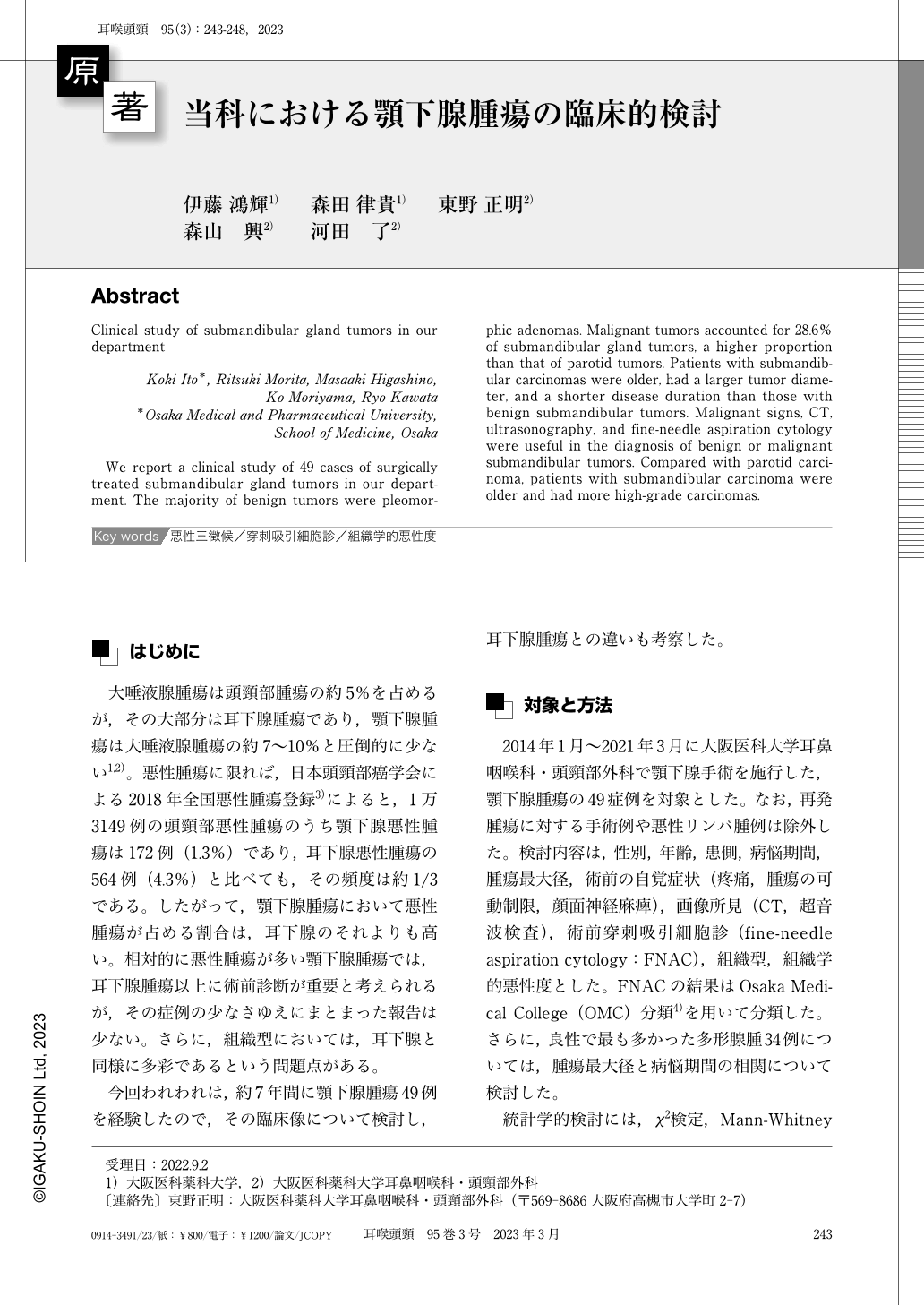Japanese
English
- 有料閲覧
- Abstract 文献概要
- 1ページ目 Look Inside
- 参考文献 Reference
はじめに
大唾液腺腫瘍は頭頸部腫瘍の約5%を占めるが,その大部分は耳下腺腫瘍であり,顎下腺腫瘍は大唾液腺腫瘍の約7〜10%と圧倒的に少ない1,2)。悪性腫瘍に限れば,日本頭頸部癌学会による2018年全国悪性腫瘍登録3)によると,1万3149例の頭頸部悪性腫瘍のうち顎下腺悪性腫瘍は172例(1.3%)であり,耳下腺悪性腫瘍の564例(4.3%)と比べても,その頻度は約1/3である。したがって,顎下腺腫瘍において悪性腫瘍が占める割合は,耳下腺のそれよりも高い。相対的に悪性腫瘍が多い顎下腺腫瘍では,耳下腺腫瘍以上に術前診断が重要と考えられるが,その症例の少なさゆえにまとまった報告は少ない。さらに,組織型においては,耳下腺と同様に多彩であるという問題点がある。
今回われわれは,約7年間に顎下腺腫瘍49例を経験したので,その臨床像について検討し,耳下腺腫瘍との違いも考察した。
We report a clinical study of 49 cases of surgically treated submandibular gland tumors in our department. The majority of benign tumors were pleomorphic adenomas. Malignant tumors accounted for 28.6% of submandibular gland tumors, a higher proportion than that of parotid tumors. Patients with submandibular carcinomas were older, had a larger tumor diameter, and a shorter disease duration than those with benign submandibular tumors. Malignant signs, CT, ultrasonography, and fine-needle aspiration cytology were useful in the diagnosis of benign or malignant submandibular tumors. Compared with parotid carcinoma, patients with submandibular carcinoma were older and had more high-grade carcinomas.

Copyright © 2023, Igaku-Shoin Ltd. All rights reserved.


